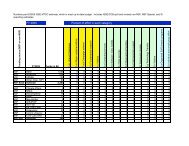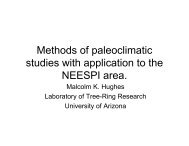Ground Truth Studies Teacher Handbook - Aspen Global Change ...
Ground Truth Studies Teacher Handbook - Aspen Global Change ...
Ground Truth Studies Teacher Handbook - Aspen Global Change ...
You also want an ePaper? Increase the reach of your titles
YUMPU automatically turns print PDFs into web optimized ePapers that Google loves.
<strong>Global</strong> <strong>Change</strong> Primer<br />
These are unique times. Our use of energy and other resources has increased to the point where we are having a measurable<br />
effect of a global scale on Earth systems such as the atmosphere. Humans have moved from mere spectators of<br />
Earth processes to center stage in the twentieth century, where we have become major players. It is no accident that we<br />
are hearing about many different global change issues all at once: climate change, the ozone hole and worldwide loss of<br />
biodiversity, just to name a few. It is, in fact, because we humans have become so numerous and consumptive, that our<br />
combined individual effects are precipitating changes on a global scale. A number of key concepts are central to the<br />
scientific study of global change and help put the issue of natural and human induced global change into perspective.<br />
<strong>Change</strong> is the norm for Earth’s natural systems<br />
The Earth is constantly changing. Some of this change occurs slowly over many millennia, and some occurs relatively<br />
rapidly over decades. Major natural forces cause such changes as volcanoes, continental shifts, building and erosion of<br />
mountains, reorganization of oceans, appearance and disappearance of deserts and marshlands, advances and retreats of<br />
great ice sheets, rise and fall of sea and lake levels, and the evolution and extinction of vast numbers of species.<br />
Recently, human beings have become a key agent of change<br />
In addition to the changes brought about by natural forces, it has recently become apparent that a relative newcomer to<br />
planet Earth — the human being — has become a powerful agent of environmental change. The chemistry of the<br />
atmosphere has been significantly altered by the agricultural and industrial revolutions. The erosion of continents and the<br />
sedimentation of rivers and shorelines has been accelerated by construction, agriculture, and other human activities. The<br />
production and release of toxic chemicals has affected the health and distribution of plant and animal populations. The<br />
development of water resources for human use has affected patterns of natural water exchange in the hydrologic cycle<br />
(e.g., enhanced evaporation from reservoirs and irrigation as compared to that from unregulated rivers). As human<br />
population grows and technology develops, the role of human beings as agents of global change will undoubtedly<br />
expand.<br />
Earth’s systems are linked through interactive processes<br />
Evidence accumulated in the last two decades indicates that environmental changes are the result of complex interactions<br />
between natural and human-related systems. For example, the Earth’s climate changes are due not only to wind and<br />
clouds in the atmosphere, but also the effects of ocean currents, human influences on atmospheric chemistry, the Earth’s<br />
orbit and albedo, the Sun’s energy output, and the distribution of water between the atmosphere, hydrosphere (oceans,<br />
lakes, rivers), and cryosphere (icecaps, glaciers, sea ice). The aggregate of these interactive linkages among the major<br />
systems that affect the environment is known as <strong>Global</strong> <strong>Change</strong>.<br />
© ASPEN GLOBAL CHANGE INSTITUTE 1995 GROUND TRUTH STUDIES<br />
11



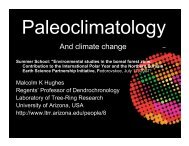

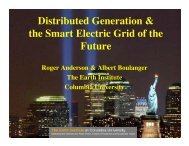
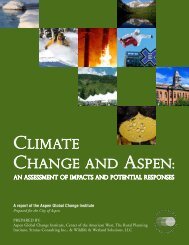

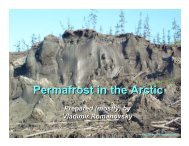
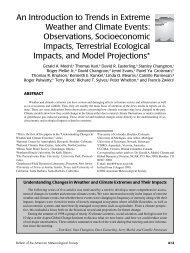
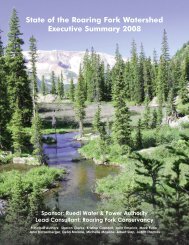
![View Powerpoint Slides [PDF]](https://img.yumpu.com/32486693/1/190x146/view-powerpoint-slides-pdf.jpg?quality=85)
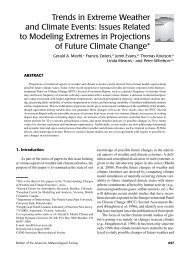

![View Powerpoint Slides [PDF]](https://img.yumpu.com/29411106/1/190x143/view-powerpoint-slides-pdf.jpg?quality=85)
